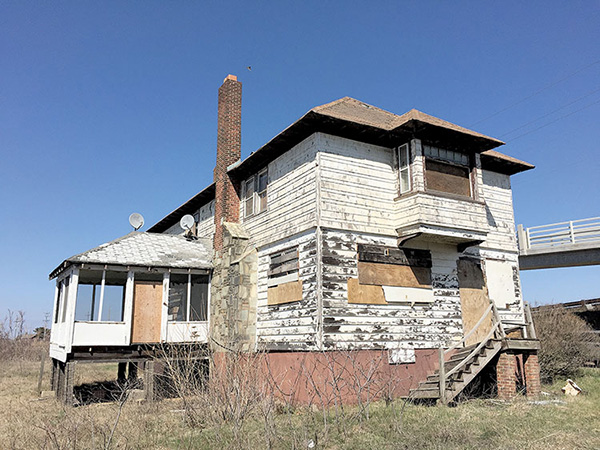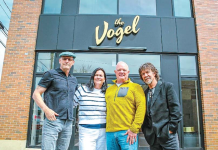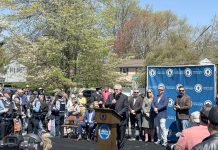By Laura D.C. Kolnoski

SANDY HOOK – The past, present and future implications of climate change and the status of the historic yet deteriorated Sandlass House were discussed during yesterday’s virtual meeting of the Gateway National Recreation Area Fort Hancock 21st Century Federal Advisory Committee.
Sandlass House
The 1880s William Sandless house, situated near the entrance of Sandy Hook, was brought up during the public portion of the meeting by Susan Sandless Gardiner, who urged the committee to consider helping make her ancestors’ home an Airbnb. Letters of support from U.S. Rep. Frank Pallone Jr. (NJ-06), state Sen. Declan O’Scanlon (R-13), and former Sea Bright Mayor Dina Long were read into the record.
“Turn a dilapidated building into a cash-positive resource,” urged Long, adding that such a use would create “an Airbnb living history experience.” Pallone’s letter stated, “The Sandlass house is an important part of our history at the Jersey Shore. An Airbnb would have limited occupancy.” He asked for the structure be included in Sandy Hook’s Request for Proposals leasing list, “to allow fixing by an entrepreneur,” and that it be considered as a landmark.
Jennifer T. Nersesian, superintendent of the Gateway National Recreation Area, said that with limited resources and lingering questions about geographic ownership, Sandlass house “doesn’t fit within our preservation priorities… does not qualify as a national historic site… and is not within the National Park Service mission to preserve. We’re struggling to preserve the park’s buildings with limited resources.”
Despite research into decades of data and documents, questions remain regarding whether the home is located within Sea Bright or Middletown. Nersesian noted the site is not part of the military history of Sandy Hook and presents “any number of challenges,” including its proximity to the water and problematic access.
“There is still ambiguity on ownership and we will keep working on that,” she said, adding that moving the building is an option. “We will continue to work with everybody. We are open to looking at legal documentation. We realize it’s important to a lot of people.”
Nerseian suggested the site may be eligible for regional or state preservation assistance.
The house was part of the 5-acre Highlands Beach Resort, a business that operated like a community for 75 years, drawing as many as 15,000 visitors from New Jersey and New York on weekends before the Garden State Parkway facilitated vacationers traveling farther south. At its height, the resort included bathhouses, cottages, cabanas, stores, homes, a bowling alley and a merry-go-round. The main house had services for patrons downstairs while three generations of the Sandlass family lived upstairs. The house was moved in the 1940s when the federal government needed access to Sandy Hook during World War II. In 1962, the land was taken by the state by eminent domain to create a state park. The family moved out the following year. When Fort Hancock was decommissioned in 1974, the park, including the former Sandlass property, reverted to the federal government. In 2012, Super Storm Sandy made it uninhabitable. Supporters have been fighting to preserve it for years.
National Climate Project
Three associate directors of the National Park Service joined the meeting to detail Sandy Hook’s participation in a pilot program for the National Coastal Plan.
“We look at Sandy Hook as something of a laboratory where climate change and historic preservation meet,” said Mike Caldwell, a program manager for NPS. “We want to set a framework for some of these critical decisions. What are the best investments for the National Park System to make?”
“Sandy Hook is a great option for a pilot project because of its natural and cultural features,” said Joy Beasley, associate director of cultural resources, partnerships, and science at NPS. Resource protection, risks and challenges, maintaining historic integrity, and vulnerability/flooding assessments based on the best science available are among the areas being studied. Officials said they hope for an update on the program this fall.
“We’re in the perpetuity business, but not everything can be saved in perpetuity,” Nersesian said.
Other News
In other park news, Nersesian said applications for fishing passes for the park end April 30. They can be obtained by visiting recreation.gov, where citizens can also make camping reservations. The lighthouse is now open weekends, and ferry service to Sandy Hook will resume Memorial Day weekend.
This article originally appeared in the April 14 -20, 2022, print edition of The Two River Times.














